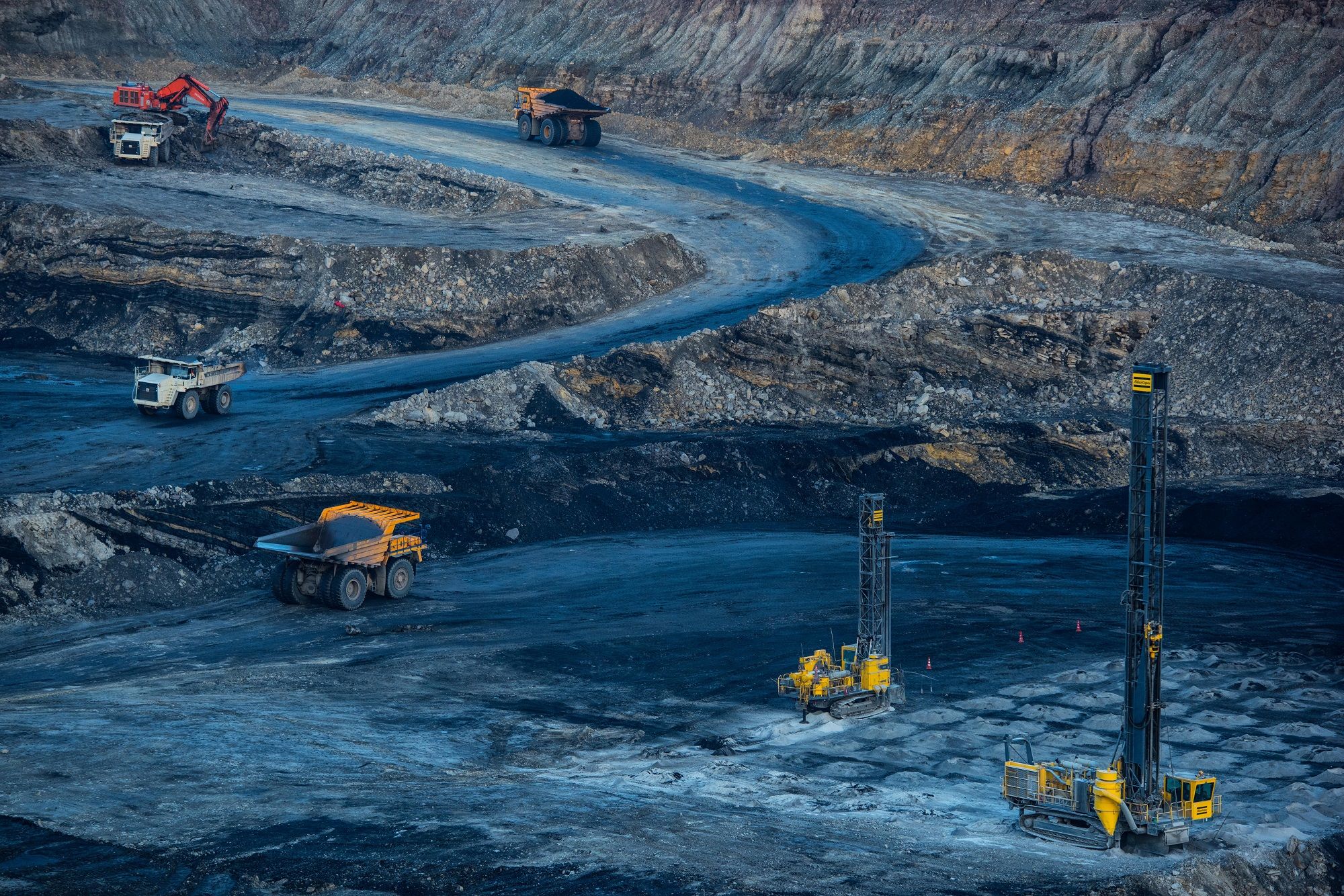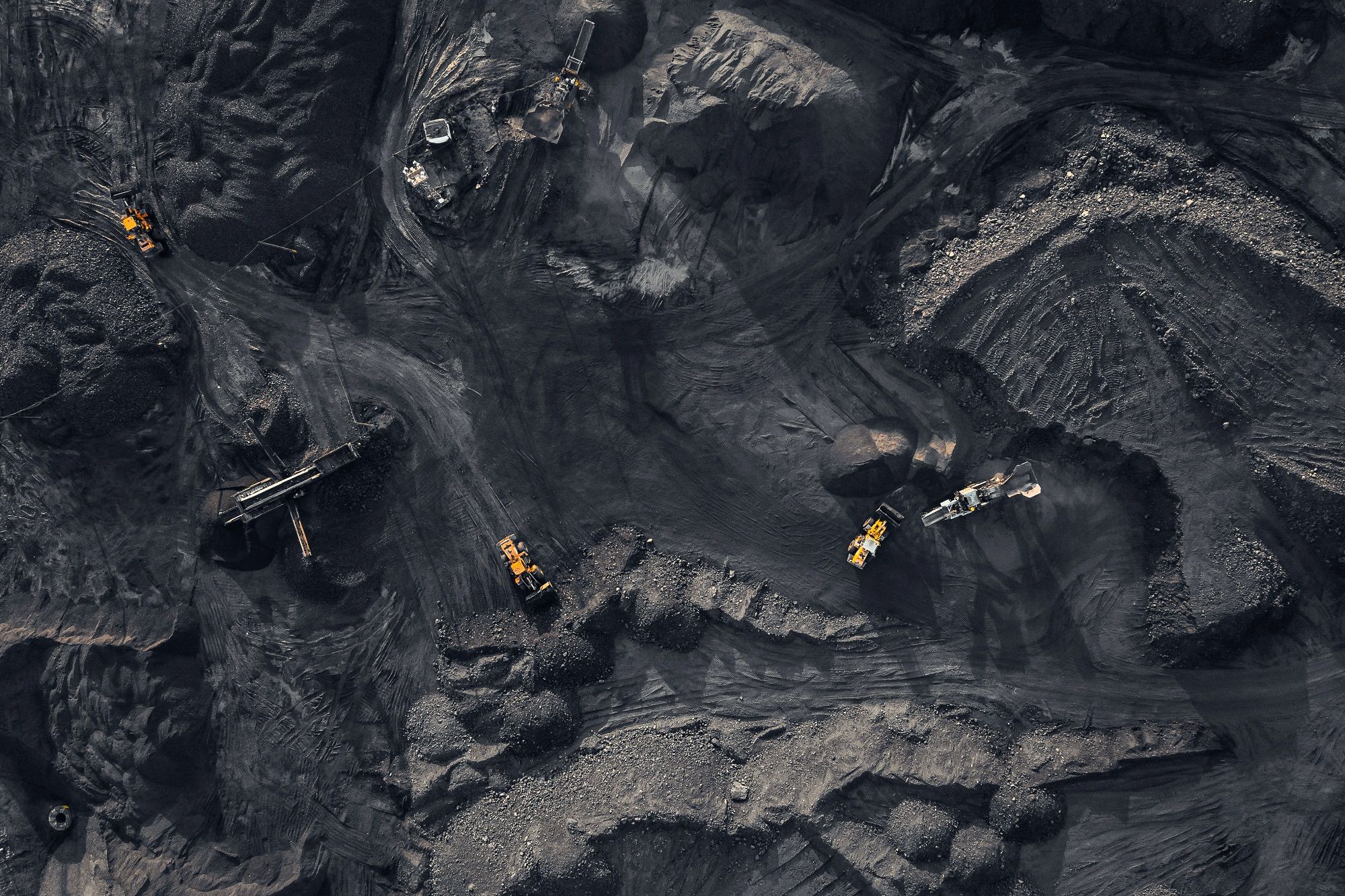The extractors – Switzerland returns to mining
Adrià Budry Carbó and Robert Bachmann, November 7, 2022
 ©
Getty Images
©
Getty Images
In the wake of Glencore, the world’s largest mining companies decided to base their headquarters in Switzerland. The movement was initiated following the collapse of the USSR by Russian companies taking advantage of their new economic freedom to get a foot in the door in the heart of Europe. Whether to benefit from our cantons’ generous fiscal policies, the largesse of banks that fund the commodities trade – or quite simply because they don’t trust their national currency – one by one, the largest coal producers from the ex-Soviet bloc set up shop in Switzerland.
These companies are called Suek, Sibanthracite, Evraz and SDS. They were all born during the wave of privatisations that followed the collapse of the USSR, they all produce their coal in the middle of Siberia (or more recently in the Far East), and above all they are managed by businessmen who “came from nothing” – as they like to say – but who enjoy a certain proximity to the Kremlin.
Investigation: Switzerland, Putin's coal-fired power plant
The SDS group (the Russian acronym for Siberian Business Union) was the first to set up in the canton of Appenzell Innerrhoden in 2000 with its trading unit MIR Trade AG. Other companies preferred the canton of Zug and particularly its trendy Baarerstrasse, where they are at times separated by nothing more than a row of glass facades. Together, they form the first apex of the Swiss coal triangle.
After stagnating for decades, coal prices skyrocketed at the start of the 2000s. In Russia, corporate empires were built on a foundation of wide-spread corruption and mafia-like practices. The sector saw stupendous rises and equally brutal falls. After the fall of the Soviet Union, the least profitable mines closed; the country shifted towards export and production progressively became concentrated within some ten companies. It was at this time that the future billionaire and Swiss resident Andrey Melnichenko invested heavily – through the MDM bank that he co-founded – taking stakes in the largest coal companies in the country, grouped under SUEK, also based in Zug.
 ©
Suek
©
Suek
Soot from Russia
Vladimir Putin himself swiftly became aware of the sector’s potential. In January 2012, while he was prime minister, he signed off on a vast programme to develop the industry to the tune of USD 119 billion – of which 8.5 billion were public funds – aimed at improving infrastructure (above all rail and maritime transport) and to boost the production of coal up to 2030. Since 2019, the Kremlin has had no qualms about providing its active support to large coal-extraction projects in the Arctic.
It was a boon for Switzerland and in particular the canton of Zug. The new taxpayers generated nearly no negative externalities, as the coal only passed through the country in the form of accounts. The companies were discreet in occupying simple offices and their owners invested extensively in real-estate and patronage projects. This is the virtuous circle of coal. Until sanctions were imposed after Russia invaded Ukraine in 2022, 75 percent of the 212 tonnes of Russian coal exported at the global level were marketed from Switzerland. Since then, there has been significant uncertainty around the future of these Zug-based companies. SUEK, for one, has moved its trading unit to Dubai, under a new name.
Geneva follows the coal train
These companies specialising in coal are also joined by other companies seeking to diversify their energy mix. This is the case for Mercuria. The Geneva-based group, often viewed as a pure trader, actually owns two coal mines (one of which is a joint venture). The first, located on the Island of Borneo, is an investment that was defined as “strategic” in 2010. It aims to develop Mercuria’s Asian and global coal assets. The second mine, Canyon Coal, was opened in South Africa in November 2018, in partnership with a local company. A Mercuria representative stated: “Coal is part of the energy landscape. It remains essential. Through modest holdings, we obtain a small flow, but primarily it helps us to understand price dynamics on the energy market. Otherwise, we’re flying blind.”
A stone’s throw from Geneva, there are undoubtedly also fears of commercial blindness. The Brazilian mining giant Vale, which set up its holding and commercial branch next to St-Prex (VD), inaugurated its first coal mine in May 2011 at Moatize in Mozambique. The approximately 8 million tonnes of production were sold from the company’s premises in St-Prex.1 After displacing nearly 3,400 families and facing opposition from numerous communities, in late 2021 Vale announced that it wanted to divest itself from coal in order to become a “leader in low-carbon mining”. A sale agreement was concluded with the Canadian firm Vulcan Minerals for USD 270 million.
However, the last coal-extraction arrivals seem to be heading for Geneva again. That is where the Indian group Adani set up its commercial subsidiary in April 2020. It remains registered at a local fiduciary. India, where nearly half of households lack access to electricity, is hungry for coal. According to the International Energy Agency’s figures, the country is set to add 130 million tonnes to global annual consumption from now to 2024.
This is a boon for the conglomerate from Gujarat (in western India), which already produces 17.5 million tonnes of Indian and Indonesian coal and which, in late 2021, started production at its controversial Carmichael mine in north-eastern Australia. After local and Aboriginal people from the Wangan and Jagalingou groups mobilised to demand that their land rights be respected, Adani was forced to reduce the scale of its project, going from a predicted annual production of 60 million tonnes to 10 million tonnes.
18 mining companies, most of which recently settled in Switzerland, extract in total over 536 million tonnes of coal a year.
Once the emissions associated with the extraction, transport and transformation into electricity are accounted for, that equates to nearly 5.4 billion tonnes of CO2 released into the atmosphere. That’s more than the emissions of the largest global power, the United States (read methodology below).
More infos
-
Methodology of the CO2-emissions estimates
Total CO2 emissions attributable to Switzerland’s coal hub have been estimated using data obtained in the financial reports of the various mining companies in question. On this basis, there remain numerous ways to calculate the environmental impact of a commodity.
For the purpose of this research, we focused on the coal’s journey, from the mine to the point at which it is transformed into electricity in a power plant. The combustion of coal in blast-furnaces of metallurgical factories generates more or less the same CO2 emissions, confirms Niels Jungbluth, director of ESU Services, a sustainability consultancy based in Schaffhausen. In contrast, the quality of coal extracted and the technological capacity of the power plants can cause the level of emissions to vary. For the purposes of our study, we estimated these as consistent, using the basis of average data for a power plant from a study of the Federal Coordination Unit on energy environmental reports. According to this source, a kilowatt hour (Kw/h) of electricity releases on average the equivalent of 1.23 kilos of CO2 into the atmosphere (against 1.36 for lignite, the most polluting form of coal).
“Coal is a commodity that is not very efficient, like oil” concludes Stéphane Genoud, professor of energy management at HES-SO Valais, a university of applied sciences in the canton of Valais. “Only 30 percent will serve to produce electricity, the rest goes up in smoke at the point of combustion.” In a pilot study on the impact of the business on the climate from 2018, the consultancy ESU Services had estimated that the carbon output of the commodities trade in Switzerland had to be multiplied by 11 times against the CO2 emissions of domestic consumption (coal is the second source of pollution, behind crude oil). However, this study did not account for the combustion of commodities “which represents 80–90 percent of the climate impact” according to Niels Jungbluth, one of its authors.
- Friends of the Earth International, A Deadly Ring of Coal: VALE’s poisoned gift to Mozambique.


 ©
©